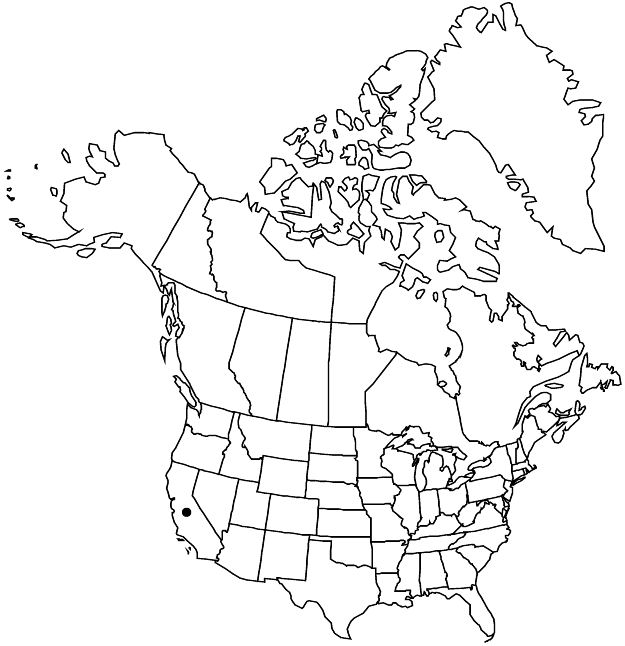Hesperolinon sharsmithiae
Madroño 53: 404, figs. 2, 3A. 2007.
Herbs, 5–50 cm, puberulent on stems just distal to nodes, otherwise glabrous or glabrate; unbranched proximally, branches from distal nodes dichotomous, widely spreading. Leaves alternate; stipular glands present only at proximal nodes; blade linear, 15–20 × 1–1.5 mm, base flat, not clasping, margins without stalked glands. Inflorescences: cymes dichasial, open, internodes long, flowers scattered; bract margins sparsely glandular. Pedicels 0.5–2 mm near tips of branches, 4–5 mm in fruit, ascending, not bent at apex. Flowers: sepals erect, not reflexed at tip, oblanceolate, (1.5–)3 mm, equal, margins sparsely glandular, surfaces glabrous; petals widely spreading, yellow, veins sometimes red-streaked, oblanceolate to obovate, or almost oval, 3–4.5 mm, apex erose; cup yellow, rim lobed between filaments and petal attachments; stamens exserted; filaments 1.5–2.5 mm; anthers yellow, dehisced anthers 1–1.5 mm; ovary chambers 6; styles 3, color not known, 2–3.5 mm, exserted.
Phenology: Flowering May–Jul.
Habitat: On serpentine soils, in chaparral, Sargent cypress forests.
Elevation: 200–300 m.
Distribution

Calif.
Discussion
Hesperolinon sharsmithiae is known from Lake and Napa counties in the Hunting Creek drainage, Cedar Roughs, and Butts and Pope Creek canyons (R. O'Donnell 2010). It grows in the vicinity of at least six other species of Hesperolinon: H. bicarpellatum, H. californicum, H. clevelandii, H. disjunctum, H. didymocarpum, and H. spergulinum. The species is distinguished from H. bicarpellatum by having three rather than two carpels and by its larger flowers. Hesperolinon sharsmithiae differs from H. tehamense in lacking the hoary indument and in having narrower petals, and it differs from H. clevelandii in having shorter styles and stamens. In his orginal description, O'Donnell noted that most of the collections annotated as H. serpentinum (a name never validly published) can be assigned to H. sharsmithiae. O’Donnell reported an area on the ridge between Pope Valley and Butts Canyon in which plants were intermediate between H. bicarpellatum and H. sharsmithiae; he noted that over a period of four years individuals of H. sharsmithiae increased in number and those of H. bicarpellatum decreased.
Selected References
None.